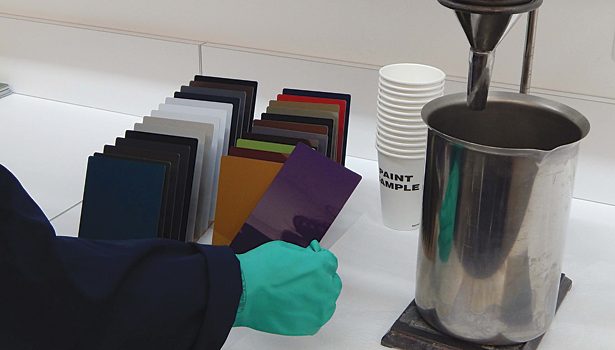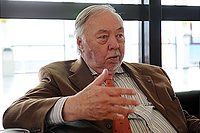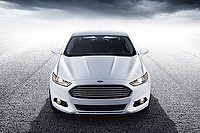A Historical Look at the Influence of Science and Design on Automotive Color
More than six decades of automotive color popularity trends

Axalta and its legacy organization have been reporting on automotive color popularity trends for over 60 years.



From the earliest years of breakthrough enamel technologies, to today’s generation of more environmentally compatible products designed to deliver durability and performance, Axalta Coating Systems and its legacy organization have helped transform the coatings industry. Color and color effects tend to be an important influence in the design of new technologies, and advancements in applied color science and paint technology are among the contributions the company has made.
Henry Ford once said, “You can have any color, as long as it’s black.” That was true, but only because during the initial era of Model Ts, black paint dried the fastest. By the mid-1920s, the opportunity to choose more vehicle colors introduced the concept of color styling across the industry, which was widely adopted. The process included working with automotive designers to match color with the brand image and design aesthetics of particular vehicles. This advancement of trends in color, as well as consumer desire to have the vehicle they purchased match their individuality, helped contribute significantly to the auto industry “revolution” that occurred in the 1920s. During this time, average workers no longer had to settle for basic transportation and could afford vehicles with options tuned to their own tastes and needs.
In the 1930s, the first mixing machine tinting system was developed to improve quality. This concept of mass mixing tints is still in use today. Added technology in the 1940s and 1950s, including the use of sand mills to disperse pigments, allowed for more prevalent color choices. In 1945, the company invented the ColorMaster™ colorimeter that was widely implemented in paint development and production activities in the United States and Europe. It was used to measure solid colors at a 45° viewing angle, which allowed scientists to characterize color for production and quality purposes.
In the late 1950s, scientists developed the first L,a,b color root equation, which became part of the foundation of modern color science. Later, metallic color measurement systems were designed using 45° and 110° angles, allowing for better quality control and faster development time.
By the 1970s, scientists considered micas as a new flake for automotive paint. Over time, these flakes would help make a large portfolio of color ranges and effects possible, including formulating pearl-like effects.
More recently, color measurement has played a key role in production shading and color quality. By the 1980s, Axalta’s legacy organization was heavily involved in the standardization of gonio-apparent color measurement with portable multi-angle instruments used in paint shops. Digital color rendering displays became available online and via ColorNet®. In 2007, digital color rendering displays allowed customers to view the paint formulation before mixing the product. Later, color measurement systems and algorithms for efficient generation of bi-directional reflectance distribution functions (BRDF) were developed based on the industry’s need and desire to describe automotive color as well as the science to provide accurate color rendering. Today, these tools are used to virtually display paint color for direct comparisons, new color designs, and annual color trend developments and planning.
Color Design and Development Over Time
To meet this ever-evolving desire of individuality in color, Axalta continually evaluates new materials and processes in order to delight designers and consumers alike, and to allow the end product to meet high standards for performance, quality and color harmony. These concepts at their initial stages may require extra processes such as additional layers to create complex effects, including candy-like tinted clearcoats, pearl whites and chromatic colors with pearl effects. However, through continuous improvement working with the automotive engineering teams, these concepts have been streamlined over time. As an example, one such innovation helped introduce “one-pass” tri-coats to market, making luxurious effects such as three-coat pearls more affordable for all vehicle segments. White tri-coats first entered the market as a luxury color, but today they are used on vehicles across all segments – from small economy cars to large SUVs.
Today, consolidated processes are intended to marry the best of design and productivity, and ensure the application of coatings without compromising color, appearance, durability or harmony. In fact, Axalta has commercialized three wet and primerless processes, which help to bring savings to the industry and reduce the environmental impact of the painting process.
A fairly niche trend for vehicle design includes low-gloss options that have been shown on full vehicles in auto shows across the globe. In general, there have been full vehicles painted with matte clear as an option, but the greatest trend for usage of this technique is to coat a specific part such as a grille or hood. Low gloss as a trend is not new. In the past, trends and consumer tastes were reflected in lower body colors, trim accents on window pillars, wheels and mirror housings. In the late 1960s, flat black hoods were popular on some Mustang models. Wide flat black stripes and details were often seen on the Camaro and Dodge muscle cars of the 1960s and 1970s as well. From a historical perspective, the saying “everything old is new again” applies even to color trends. We have found that often old trends return in fresh, updated futuristic designs. Today they are spotlighted in auto shows and aftermarket vehicles in a variety of shades including silver, gray, blue, red and purple.
Color on Premium Versus Mass Market Vehicles
The premium vehicle segment presents the advantage of consumers that are willing to spend a little extra for luxury and individuality. To meet this demand, designers and vehicle manufacturers in this segment can afford to offer special colors and effects, while charging a premium for them.
Historically, color options and effects only affordable within the luxury market tend to become available over time to the mass market, as was the case in the 1920s, when options reserved for the most expensive motor coaches began to find their way into the average family car. This trend also has been seen in recent years. Tri-coat pearls and tint coats were once only available on the most expensive segments of luxury and exotic sports cars.
Today, these same colors and effects are available across nearly all segments. While the luxury segment can best afford color choice and premium color offerings, consumers at all levels and market segments desire these options as well. Studies consistently show more than 30 percent of car-buying consumers, regardless of demographic, will change brands to get the color they want. OEMs that can deliver affordable choices will be better positioned to gain market share.
North American Automotive Color Popularity
Coatings have certainly evolved over time, just as paint technology, coating application techniques and color design tools have evolved according to years of data held by Axalta. Vehicles during the 1950s were showcased in soft, muted hues in coral, blue and yellow. Water-like hues of blue, teal and green also were popular, as well as solid shades like black, ivory, white, light beige, red and dark brown.
In the early 1960s, medium-shade red metallics started to emerge as a more popular color choice. The use of Lucite acrylic lacquers increased during this timeframe with the use of more metallic colors. By the end of the decade, a warmer color range started to emerge, as medium gold metallic and light copper browns were favored over the more muted soft colors of the 1960s.
The 1970s brought medium and dark shades of brown as popular automotive coatings. This was the era of low fuel economy on vehicles, but one in which a rising concern for the environment began to emerge. The first Earth Day was April 22, 1970, and popular colors that followed reflected those of nature. Overall, the palette had become darker than in earlier decades. Gold and copper metallics and various shades of blue also were frequently used, and vehicles wore these shades well.
In the 1980s, bright red solids were increasingly selected for compact cars and trucks. Medium red metallics and dark red were mostly used on full-size and intermediate vehicles. Blues and browns could be found in various shades, with a range from medium brown metallics to dark brown metallics. Light gold metallics, solid beige and tan colors were prevalent as well.
The 1990s are most remembered for the popularity of white, red and green, with red holding a leadership position early in the decade, only to be overtaken by green in 1994. White was heavily used for the truck segment, reflecting an increase in fleet vehicles as scores of Americans went to work independently and with companies using fleet vehicles for business. Various shades of green were used on all vehicle segments, but darker shades were most popular during the latter part of the decade.
Silver emerged as a leader in the early 2000s as the most popular color in the beginning of the decade, but surrendered leadership to white near the end of the decade. Overall, according to Axalta data, this decade is noted as being the most popular decade for non-chromatic colors. Interestingly, silver and white were found in the top three colors every year of this decade, which was the first time a duo of color choices led year-over-year for such a lengthy run. Black effect colors increased during this time as well and contributed, along with traditional blacks, in making significant strides in demand for the color over time.
Today’s colors are some of the most brilliant and interesting of all time. Due to coatings innovations, colors are rich in chroma, hue travel, metallic brightness and complexity, offering a more well-balanced color range than ever before. Some car paints have dark spaces with coarse colored flakes, while others boast high-travel light metallics and multi-coat pearlescent colors, depending on OEM and consumer preferences.
Global Automotive Color Popularity
From a global perspective, color choices were more differentiated in the 2000s than today. Asia has a history of using silver/gray metallic or white. Europe favored red in the 1980s but moved to more neutral colors in more recent history. South America has followed the recent trend of neutral color preferences. In all regions, silver gained popularity in 2000 and rose to a world favorite for five consecutive years.
Today’s global economy and automotive market reflect a reduction in regional preferences and provide a global trend in automotive colors on the road.
The future of automotive color is subject to change as we have seen throughout history. The use of neutral color spaces is thought to be reaching its peak, and with this, we anticipate we will see more color and flash on the roads of tomorrow.
Looking for a reprint of this article?
From high-res PDFs to custom plaques, order your copy today!











